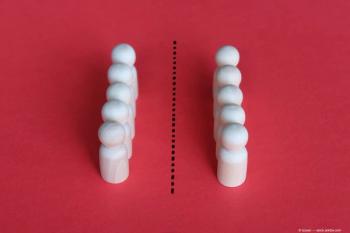
Patient Case #2: 39-Year-Old Female With Myopia and Astigmatism
Blake K Williamson MD, MPH, MS, reviews a case of a 39-year-old female with high myopia and astigmatism seeking surgical refractive correction.
Blake K. Williamson, MD, MPH, MS: The second case I presented at the Ophthalmology Times® roundtable was a 39-year-old female who comes in for an initial refractive surgery evaluation of the right and left eye, having blurry vision, wanting spectacle independence, and the patient feels that both eyes are equally blurry. This patient has been wearing contact lenses and glasses since the age of 10. She is wearing the extended soft-wear contacts, but she’s been out of them for almost 2 weeks in preparation for her clinical evaluation. On exam uncorrected vision is 20/320 OU [in both eyes]. This patient is wearing a pair of -6.50 glasses in the right and -5.50 sphere in the left. Manifest refraction is fairly similar. We have a -6.50, +50 at 74 in the right eye, giving 20/20 vision, and in the left eye -5.75, +75 at 175, again giving us 20/20 vision.
Looking at the corneal topography for this patient, the topography and the tomography were stone-cold normal. This patient had less than a diopter of corneal cylinder, a normal pachymetry map, and posterior elevation of the right eye was also very normal. In the left eye, it was very similar, a very small amount of corneal cylinder, less than a half diopter or so, normal pachymetry map, and normal elevation map. The retinal exam was completely normal. The optic nerve looked healthy. The macula scan was totally flat.
Transcript edited for clarity
Newsletter
Don’t miss out—get Ophthalmology Times updates on the latest clinical advancements and expert interviews, straight to your inbox.















































.png)


